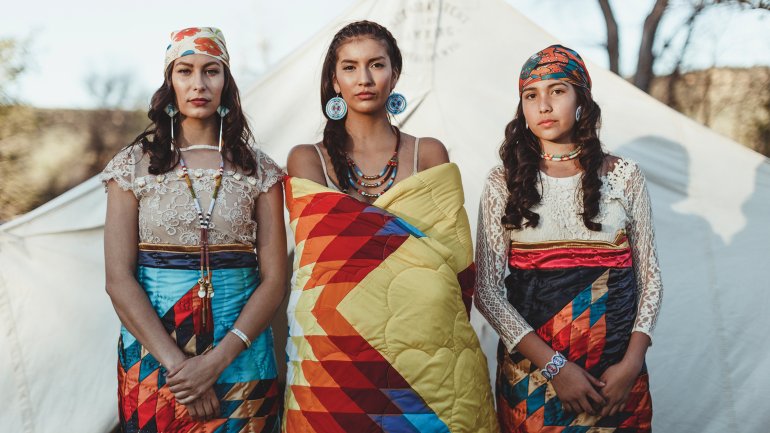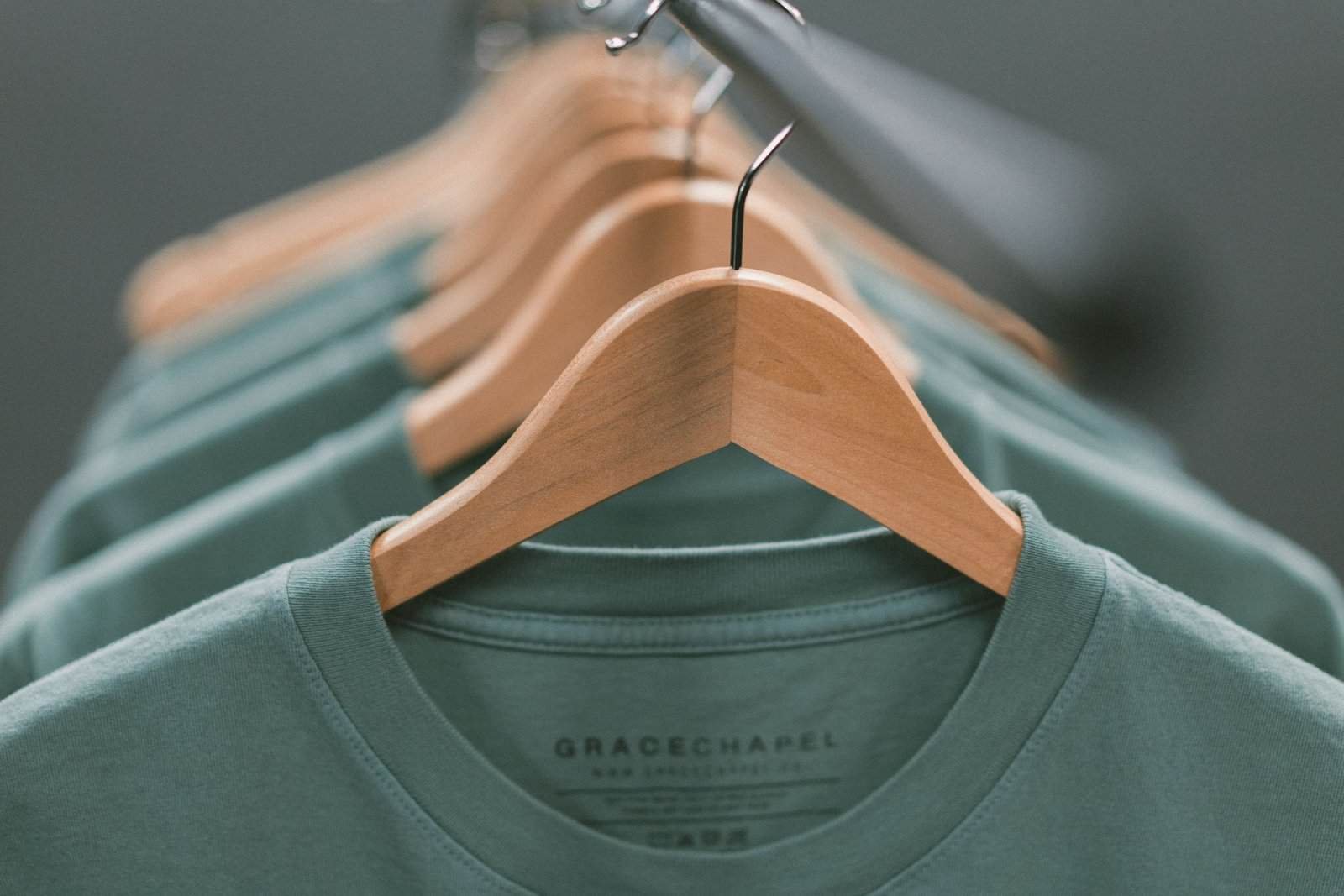

Looks from B. Yellowtail. (Photo Credit: American Craft Council)
As November unfurls its autumnal tapestry, we find ourselves immersed in the rich hues of National Native Heritage Month—a time to celebrate and honor the diverse cultures, histories, and contributions of Native American peoples. This month offers an opportunity not only to delve into the vibrant traditions of indigenous communities, but also to reflect on the complex relationship between fashion and cultural appropriation.
For decades, the fashion industry has drawn inspiration from indigenous designs, textiles, and embroideries. Renowned designers such as Ralph Lauren and Isabel Marant have woven the intricate threads of Native American aesthetics into their collections, creating garments that pay homage to the beauty of indigenous cultures. The allure of tribal patterns, beading techniques, and earthy color palettes has undeniably left an indelible mark on the world of haute couture.
Ralph Lauren built an empire on his vision of ‘Americana’. Not only have his collections included the American flag, but throughout the years he has incorporated elements inspired by Native American dress. From Navajo prints to fringe details reminiscent of traditional Native attire, his collections have been a testament to the timeless beauty of indigenous craftsmanship. Similarly, Isabel Marant, a French fashion luminary, has skillfully blended bohemian chic with Native American influences, creating pieces that resonate with a global audience.
A Ralph Lauren Native American inspired look from 1981. Photo Credit: Ralph Lauren)
However, as the fashion industry navigates the complex waters of cultural sensitivity, a spotlight is being cast on the issue of cultural appropriation. What was once seen as homage, is now under scrutiny, prompting a shift in perspective. The borrowing of elements from Native American cultures has given rise to an “appropriation” uproar, challenging the industry to reassess its practices.
In recent years, discussions surrounding cultural appropriation have gained momentum, urging designers to reconsider their approach to incorporating indigenous motifs. The line between ‘appreciation’ and ‘appropriation’ has become increasingly blurred, prompting a call for greater respect and understanding. Native communities argue that using sacred symbols, traditional patterns, or religious attire without context or proper acknowledgment perpetuates harmful stereotypes and commodifies their heritage.
As fashion enthusiasts, it’s crucial to engage in conversations about cultural sensitivity and the impact of our clothing choices. Designers are now encouraged to collaborate with indigenous artists and craftspeople, ensuring that the cultural context is preserved and respected. The emphasis is shifting towards appreciation rather than appropriation, promoting a more inclusive and respectful approach to fashion that celebrates diversity without erasing the roots of inspiration.
National Native Heritage Month serves as a poignant reminder to celebrate and learn from indigenous cultures rather than commodify them. While fashion has been a powerful medium for cultural expression, the industry is evolving towards a more conscious and respectful future—one that honors the rich tapestry of traditions without unraveling the fabric of cultural identity. As we admire the beauty of Native American influences in fashion, let us do so with open hearts, listening to the voices of those whose heritage we celebrate and ensuring that our appreciation is a bridge rather than a barrier.
WEAVING TRADITIONS
Looks from EMME Studio. (Photo Credit: EMME Studios)
National Native Heritage Month is not just a time to admire the tapestry of indigenous cultures, but also an opportunity to celebrate the incredible talents of Native American fashion designers who are reshaping the landscape of fashion. Here are eight designers whose work not only captivates the runway but also pays homage to their rich heritage.
JENNIFER YOUNGER
Jewelry by Jennifer Younger. (Photo Credit: Jasper Soloff)
Jennifer Younger effortlessly fuses traditional Native aesthetics with contemporary silhouettes. Her designs, inspired by her Navajo heritage, are a testament to the enduring beauty of indigenous artistry.
JAMIE OKUMA
A look from Jamie Okuma. (Photo Credit: Jamie Okuma)
Jamie Okuma, a Luiseno and Shoshone-Bannock artist, brings beadwork to life in ways that defy expectations. Her intricate bead designs tell stories, capturing the essence of Native American narratives with each carefully chosen hue.
EMME STUDIO
Models display Korina Emmerich’s Drugstore Rodeo 2021 collection. (Photo Credit: Two Hawks Young)
Korina Emmerich, of the Puyallup Tribe, blends her Native roots with a modern edge in EMME Studio. Her pieces are a dynamic fusion of bold patterns and innovative designs that transcend cultural boundaries.
TANIA LARSSON
Jewelry by Tania Larsson. (Photo Credit: Jamie Stevenson Photography)
Hailing from the Gwich’in and Kaska Dena nations, Tania Larsson’s creations are a dance of color and texture. Her work reflects the vast beauty of the Canadian North, echoing the Northern Lights in every stitch.
B. YELLOWTAIL
A look from B. Yellowtail. (Photo Credit: B. Yellowtail)
Bethany Yellowtail, a member of the Crow and Northern Cheyenne tribes, empowers through fashion. Her brand, B. Yellowtail, blends cultural motifs with elegant simplicity, creating clothing that embodies strength and grace.
EVAN DUCHARME
Looks from Evan Ducharme. (Photo Credit: Evan Ducharme)
Evan Ducharme, a designer of Metis heritage, weaves his cultural identity into every garment. His creations tell the story of the Metis people, combining historical reverence with a contemporary flair.
GINEW
Looks from Ginew. (Photo Credit: Ginew)
Dyani White Hawk, a member of the Rosebud Sioux Tribe, breathes life into denim through her brand Ginew. Her designs honor her Native roots with intricate details, showcasing the spirit of heritage in every stitch.
4KINSHIP
A look from 4Kninship. (Photo Credit: 4Kinship)
Amy Denet Deal, a Chickasaw designer, explores the intersection of elegance and tradition in 4Kinship. Her creations embody the spirit of Native American aesthetics, offering a harmonious blend of the past and present.
NAVIGATING THE THREADS OF CULTURAL SENSITIVITY
As we celebrate National Native Heritage Month, let us not only appreciate the breathtaking designs but also recognize the profound stories woven into each thread. These eight designers stand as living testaments to the resilience, creativity, and cultural pride of indigenous communities. In a world where fashion often transcends borders, their work serves as a powerful reminder that diversity is not just a trend but a celebration of the rich tapestry of human experience.
So, tell us, when designers are influenced by a culture that is not their own, do you believe it is cultural appropriation, or do you believe its an homage to?






